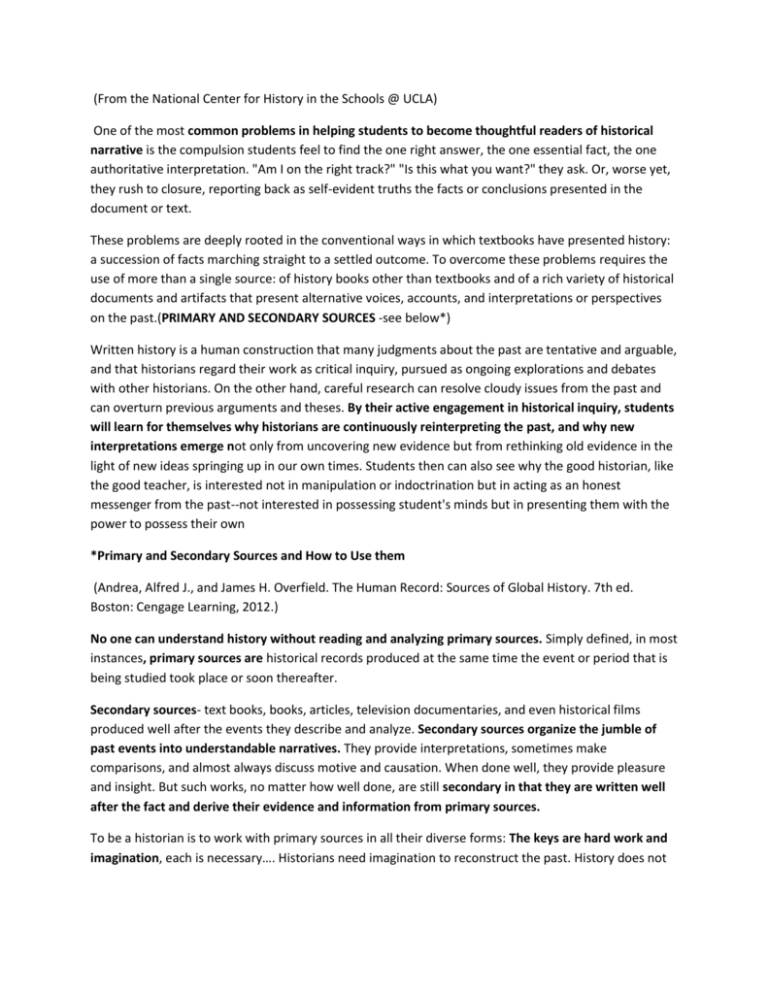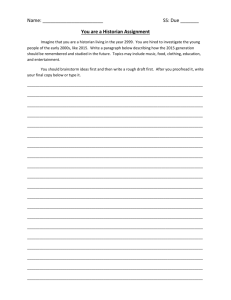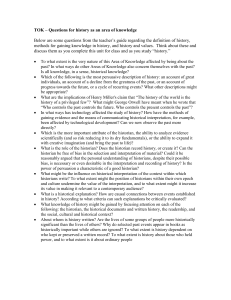(From the National Center for History in the Schools @ UCLA) One
advertisement

(From the National Center for History in the Schools @ UCLA) One of the most common problems in helping students to become thoughtful readers of historical narrative is the compulsion students feel to find the one right answer, the one essential fact, the one authoritative interpretation. "Am I on the right track?" "Is this what you want?" they ask. Or, worse yet, they rush to closure, reporting back as self-evident truths the facts or conclusions presented in the document or text. These problems are deeply rooted in the conventional ways in which textbooks have presented history: a succession of facts marching straight to a settled outcome. To overcome these problems requires the use of more than a single source: of history books other than textbooks and of a rich variety of historical documents and artifacts that present alternative voices, accounts, and interpretations or perspectives on the past.(PRIMARY AND SECONDARY SOURCES -see below*) Written history is a human construction that many judgments about the past are tentative and arguable, and that historians regard their work as critical inquiry, pursued as ongoing explorations and debates with other historians. On the other hand, careful research can resolve cloudy issues from the past and can overturn previous arguments and theses. By their active engagement in historical inquiry, students will learn for themselves why historians are continuously reinterpreting the past, and why new interpretations emerge not only from uncovering new evidence but from rethinking old evidence in the light of new ideas springing up in our own times. Students then can also see why the good historian, like the good teacher, is interested not in manipulation or indoctrination but in acting as an honest messenger from the past--not interested in possessing student's minds but in presenting them with the power to possess their own *Primary and Secondary Sources and How to Use them (Andrea, Alfred J., and James H. Overfield. The Human Record: Sources of Global History. 7th ed. Boston: Cengage Learning, 2012.) No one can understand history without reading and analyzing primary sources. Simply defined, in most instances, primary sources are historical records produced at the same time the event or period that is being studied took place or soon thereafter. Secondary sources- text books, books, articles, television documentaries, and even historical films produced well after the events they describe and analyze. Secondary sources organize the jumble of past events into understandable narratives. They provide interpretations, sometimes make comparisons, and almost always discuss motive and causation. When done well, they provide pleasure and insight. But such works, no matter how well done, are still secondary in that they are written well after the fact and derive their evidence and information from primary sources. To be a historian is to work with primary sources in all their diverse forms: The keys are hard work and imagination, each is necessary…. Historians need imagination to reconstruct the past. History does not consist of just irrefutable dates, names, and facts…documents provide factual data- dates, names, statistics…etc…yet they have no meaning until they have been interpreted. The Historian as detective…the historian is interested in discovering “what happened, who did it, and why”… the historian must carefully examine witnesses (testimony of sources) and evaluate the validity of the source, is it valid, or misleading, from what perspective or interest does the source testify… Even eyewitness accounts can differ widely… Given this fact the historian must understand the sources perspective and must ask several key questions….What kind of Document is it? Who wrote it? For whom and why? Where was it composed and When? Discovering the nature of the source…what kind of info can you expect to find in it? Can you accept all sources uncritically…they must be tested against other sources… distance in space and time can influence perceptions and diminish the reliability of the source. Often there are no “answers” just more questions… the student historian/detective has to be able to question…and in doing so begin to create a multi-dimensional view of the past…and realize that the present and future are as equally multi- dimensional… realizing that any “truth” is relative and sensitive to the time and place it is constructed.











